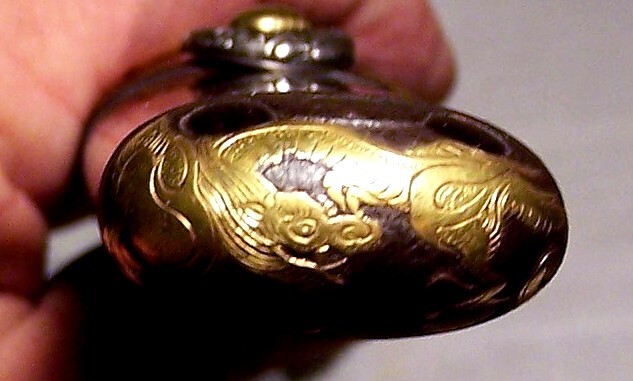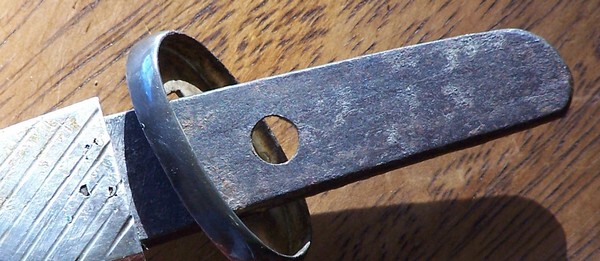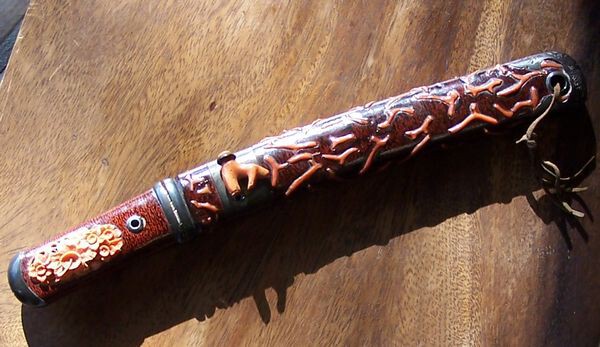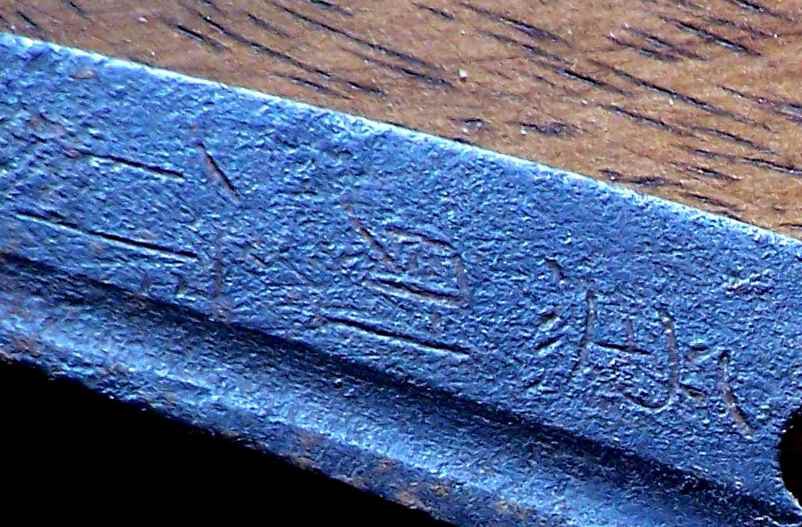
Jim Lewis
Members-
Posts
12 -
Joined
-
Last visited
Profile Information
-
Location:
Columbus, NC
-
Interests
Bonsai, Ukiyoe, netsuke, swords
Jim Lewis's Achievements
-
Difficult Netsuke Mei?
Jim Lewis replied to Bugyotsuji's topic in General Nihonto Related Discussion
You might try the netsuke forum . . . http://forums.netsuke.org/tool/mb/netsuke -
My best guess -- reached after some years of thinking about it -- for the fittings on this sword is that they are MUCH newer than the sword. The menugi (is that the term?) that fastens the sword to the handle is a screw with the golden ladybugs as the head. One side screws into the other. I'm sure this is not the traditional way of doing this. I'd think that someone spent a lot of money to re-fit this sword shortly before WW II and that it was sold after the war by the family, made destitute because of the death and destruction. We bought it from a shop in Kanda in the mid 50s (probably true of 80-90% of the swords that have made it to the west). Oh, and here is the pic of the certificate that got lost when Brian or someone flipped the pic of the signature - Many thanks for doing that.
-
Here are some pics of the hardware. Someone put a lot of work into it. ====================== I'm afraid this constitutes my entire collection. I'll have to resort to lurker status from here on out. But if anyone can come to a better conclusion on #2 and tell me if they can ID the maker of this one and if the certificate belongs with it, I'll be very appreciative. Thanks all.
-
-
The tang and the other side of the blade. And the certificate again. Mod edit turned it right side up, sorry i lost the first pix in doing so SC
-
This one is 17 inches long. It is the best looking of all 3 of them (FWIW). The scabbard and handle appear to be of walnut or oak stained dark. At any rate, the wood is very, very hard. The fittings are of iron and gold. The rims around the gold ladybug menuki are silver. The Kogai and Kodzuka are matched with embossed pastoral scenes finished in gold. The blade of the Kodzuka is etched and signed. The gold on the fittings at the handle and tip of the scabbard and at whatever the equivalent to the tsuba is called where the handle and scabbard meet in these swords are gold dragons. I've repeated the certificate with this one, too (and also reproduced it backside, though I'd bet that's just boilerplate language of some sort). The blade itself is signed on one side. It appears to be a cut-down blade, and I think one of the holes (the new one, I assume) eliminates part of the signature.
-
Two things I think I've learned here: 1. Vertical is the proper way to photograph the sword? 2. This stuff can be hard to read? I did say in the opening commentary that I wasn't certain that the certificate referred to this sword or not. It was inserted into my sword book with no annotation. I suspect it applies to the sword I'll be posting here later today. I'll reproduce it again there. I can't tell from the comments. Is there a consensus here? :D
-
-
This one measures 12.5 inches. We were told upon purchase that it was a "ladies' sword." It is, I think, the ugliest scabbard I've ever seen. It is lacquer, with pieces of red coral inset into it. The handle of the blade is laquer with diagonal bands of alternatig gold and silver strips with a phoenix menuki on one side and a large red coral flower carving (lotus?) on the other. A larger piece of coral is set into two rings (one is now missing (?!)) and acts like a hinge. Why I don't know. The blade itself is quite attractive. Unless that one slash on on side of the tang is a signature, it is unsigned. The hole in the tang (mekugi?) is larger than it needs to be. The last two pics (next post) is a certificate that I think came with this one, though it may be associated with the next one.
-
Thanks all. "Hamon" . . . is that the temper line? In MY book (which I found) it is called the "yakiba." I don't see a "hamon" on the illustration of blade nomenclature. There are 20 pages of "varieties of yakiba" illustrations. I can't imagine there is anyone within 500 miles of me qualified to clean and polish any of these. They've been stored with heavily oiled blades wrapped tightly in plastic wrap (then fitted back into then scabbards) for the last 20 years. (I can feel the shudders from here. ) I cleaned them carefully this morning with a solvent and a very soft cloth. Any suggestions as to how they should be kept from here on out? The book I have is "Nippon-to, The Japanese Sword" by Inami Hakusui, Cosmo Publishing Co., Tokyo, 1948. It is a falling-apart first edition. I know there are many newer books, but with just 3 swords it doesn't seem likely I'll fork out the money for any of them as I do for netsuke or ukiyoe books -- or bonsai books. I thought I'd made the pic at 600 pixels, which is the limit on my bonsai board, but I guess not. I'll take more care.
-
I'm doing something wrong. My message 1 shows that 4 pics WERE downloaded. Three show. Message 2 says I downloaded a pic. It does not show, but you can click to bring up a picture of it. Is there something I don't see here? Anyway, thanks for any info you may have.
-
I have three short swords. We got them in Japan during the occupation in the early and mid 1950s. My folks were American Embassy, not military. I was a junior and senior in high school. I know very little about swords. I have one old book which I seem to have mislaid right this moment :? Anyway, I'd like any info any of you have on these -- for my personal edification only. Here are some pics of the first. The scabbard is of plain wood (I understand these were what blades were kept in when not in use or on display). It is 17.5 inches long (including the handle). The tang has Kanji on both sides. We were told it was made by a Kanenori in about 1558. Written in pen around the top of the handle (grip) (where the tang goes into the handle) is: "Eikuko 8th Year 1560." I assume my father wrote it. Here are some pics. (I'll try to remember to load them in reverse next time.) Any info you might have on the supposed maker and what the engraving on the tang says will be appreciated.
























